A few electric field lines for a system of two charges and fixed at two different points on the x-axis are shown in the figure. These lines suggest that
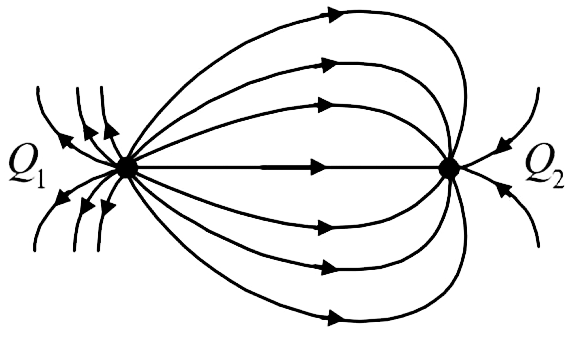
at a finite distance to the left to , the elctric field is zero
at a finite distance to the right of , the electric field is zero.
A number of electric field lines of forces emerging from are larger than terminating at
Similar Questions
Figure shows electric lines of forces due to charges Q1 and Q2 Henice
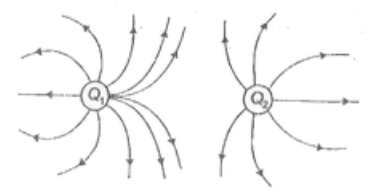
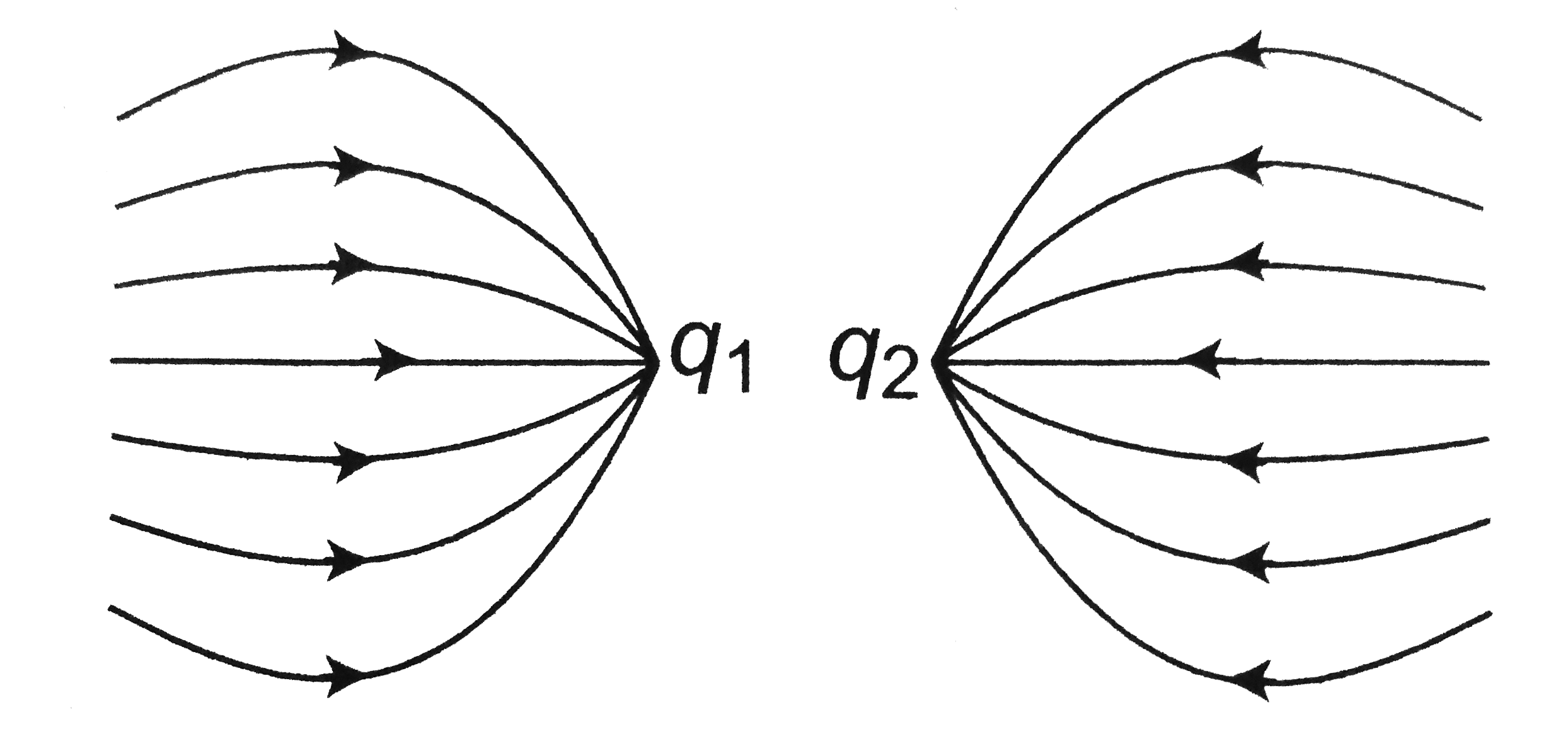 View Solution
View SolutionThe figure shown is a plot of electric field lines due to two charges Q1 and Q2 . The sign of charges is
 View Solution
View SolutionIn the adjoining figure, the electric field lines for charges q1andq2 are shown. Identify the sign of the charges.
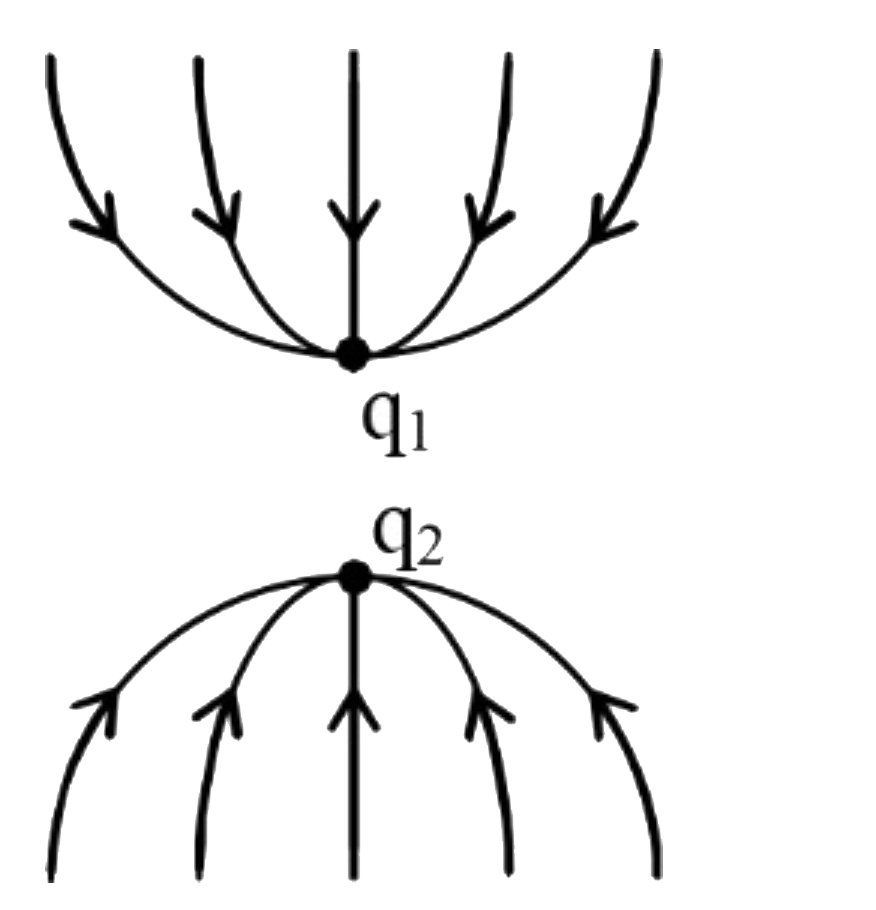 View Solution
View SolutionThe given figure gives electric line of force due to two charges q1 and q2. What are the signs of the two charges ?
 View Solution
View Solution(a) Depict the equipotential surfaces for a system of two identical positive point charges placed a distance 'd' apart.
(ii) Deduce the expression for the potential energy of a system of two point charges q1andq2 brought from infinity of the points →r1 and →r2 respectively in the presence of external electric field →E.View Solution(A)Two point charges q1 and q2 are kept r distance apart in a uniform external electric field →E. Find the amount of work done in assembling this system of charges. (B) A cube of side 20 cm is kept in a region as shown in the figure. An electric field →E exists in the region such that the potential at a point is given by V=10x+5, where V is in volt and x is in m. Find the electric field →E and (ii) total electric flux through the cube.
 View Solution
View SolutionThe figure is a plot of lines of force due to two charges q1andq2. Find out the sign of charges.
 View Solution
View SolutionThe lines of force of the electric field due to two charges q and Q are sketched in the figure. State if
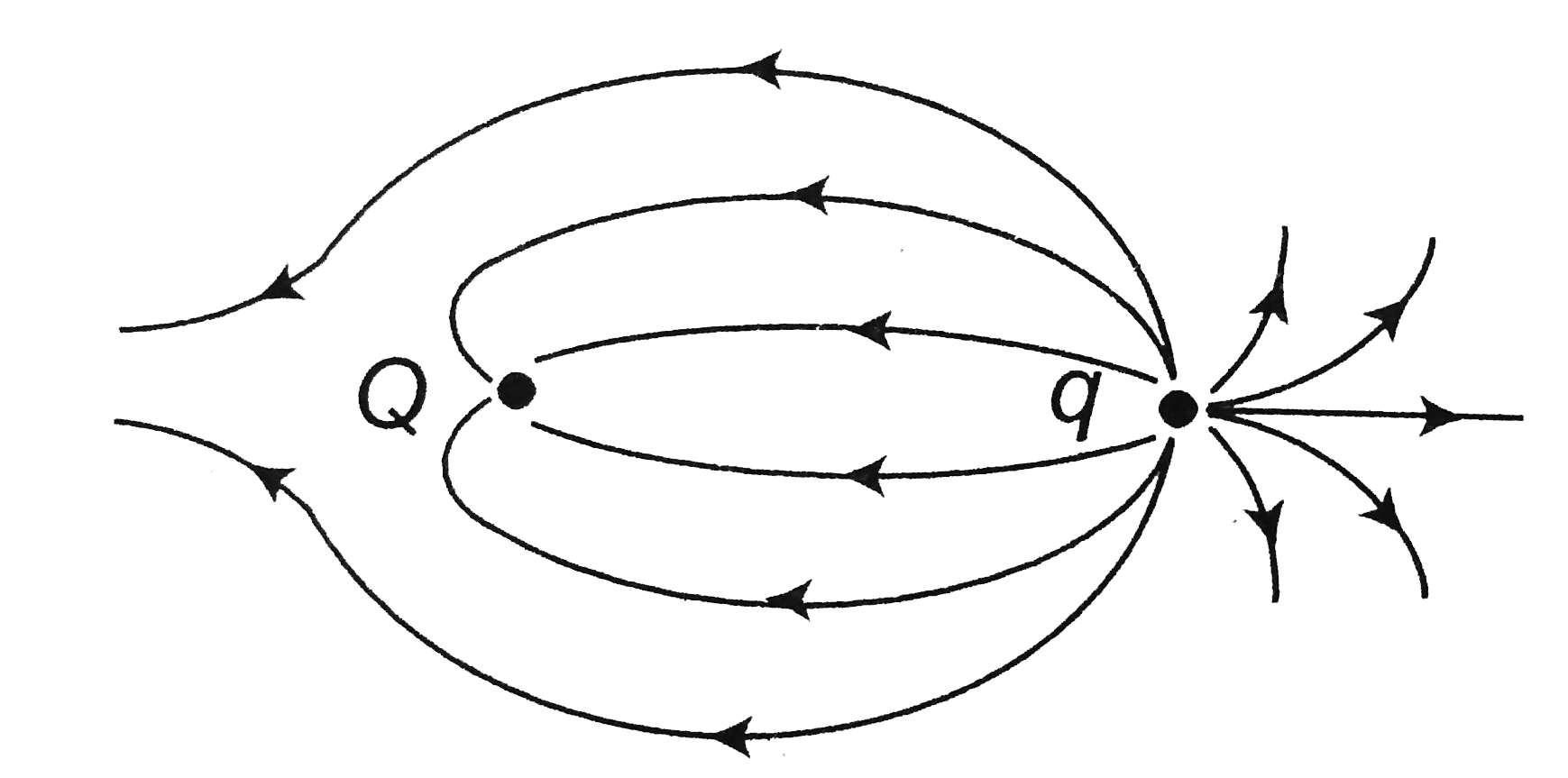 View Solution
View SolutionTwo point charges +4q and +q are placed 30cm apart. At what point on the line joining them is the electric field zero
View SolutionFig. shows some of the electric field lines due to three point charges arranged along the vertical axis. All three charges have the same magnitude.
(a) What are the signs of each of the three charges? Explain your reasoning.
(b) At what points(s) is the magnitude of the electric field the smallest? Explain your reasoning. Explain how the fields produced by each individual point charge combine to give a small net field at this point or points.
(c ) Two point charges q and -q are placed at a distance d apart. What are the points at which the resultant electric field is parallel to the line joining the two charge?
 .View Solution
.View Solution
